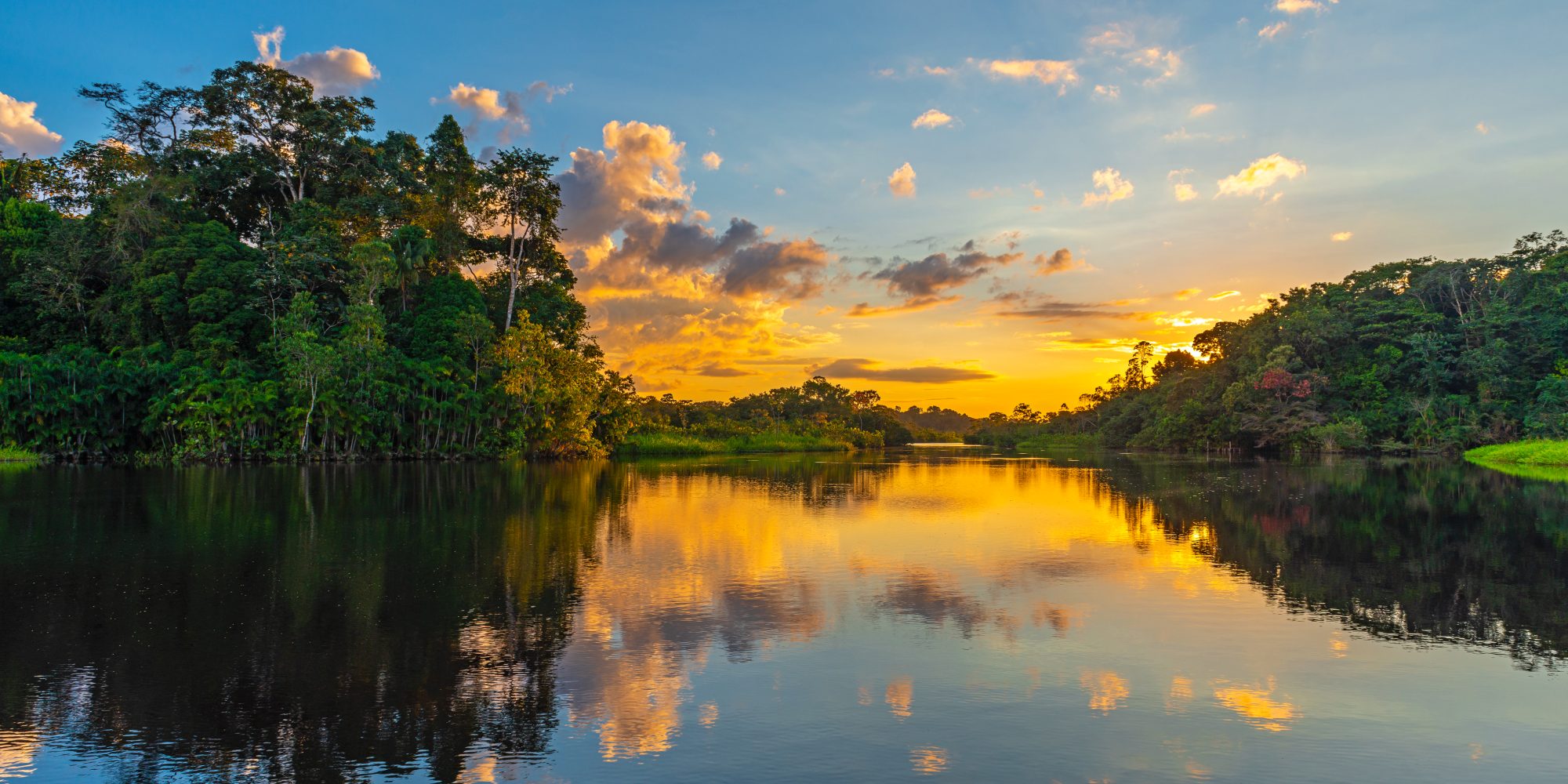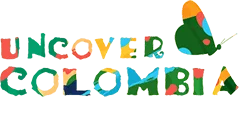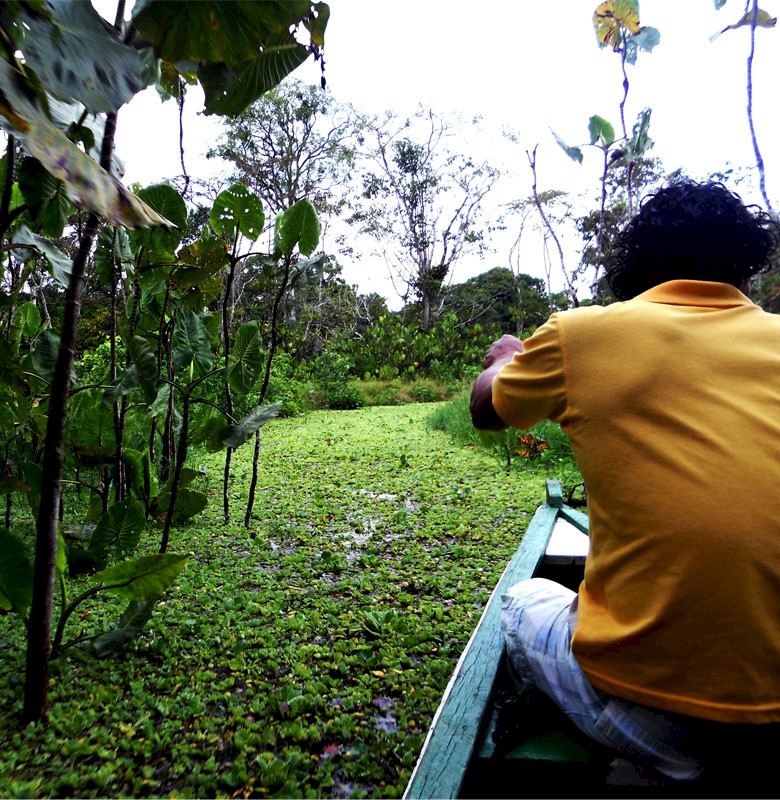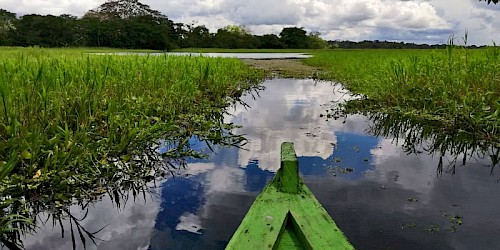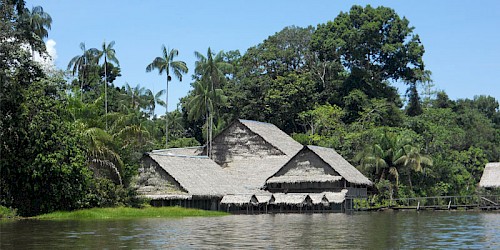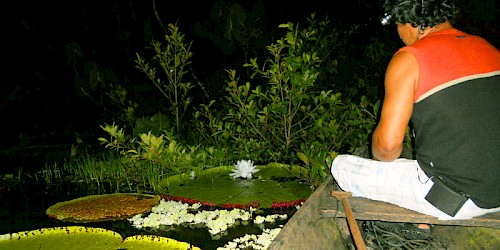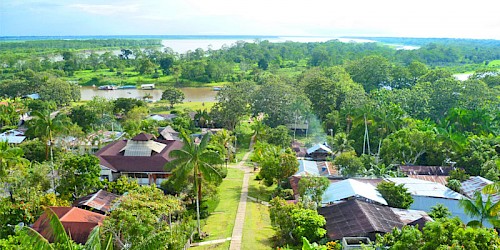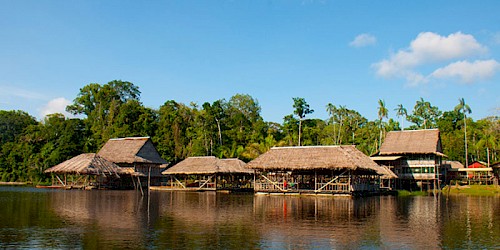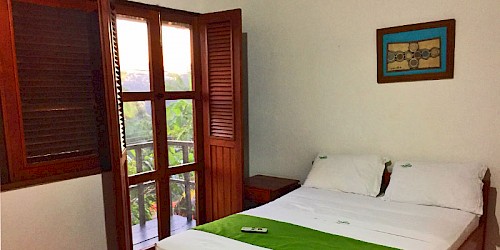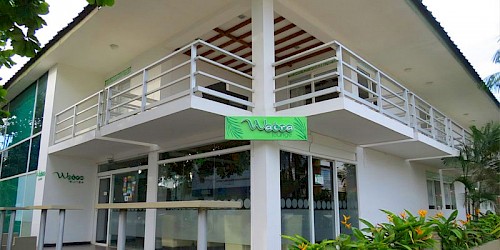Today, we will start exploring this part of the Colombian Amazon region by visiting two incredible nature reserves on the Colombian and Peruvian sides of the river.
First, we will head to Tanimboca Nature Reserve, located 11 kilometres from Leticia. This natural reserve of thirty hectares of protected forest is famous for its canopy activities. At the nature reserve, we will start with a short walk across the jungle to access the first platform by rope climbing, and then we will cross from one platform to another by a zip line. You will practically fly at the trees' top level to get a unique view of the jungle and its remarkable fauna and flora. We can do kayaking instead of the canopy if you prefer another activity.
Then we will continue the expedition to Marasha Nature Reserve in Peru, located 45 minutes by boat from Leticia. The dry and rainy seasons change the ways of accessibility in the Amazon. During the rainy or high water season, we will reach the reserve by boat, and during the dry or low water season, we will do it by walking; both journeys will take approximately 1.5 hours from the shore of the Amazon River.
While travelling from the river to the nature reserve, we will observe the great jungle landscape with its huge trees, monkeys, butterflies and multi-coloured birds, among other fauna and flora. On arrival at the reserve, a delicious grilled fish will be waiting for us to enjoy a traditional lunch.
The reserve is peaceful and offers a variety of activities, such as fishing and canoeing.
After dinner, there will be a tour to see the nocturnal activity in the jungle and search for black caimans.
Note: The rainy season goes from February to June, and the dry season from July to January.
Overnight: Marasha Natural Reserve
Meal Plan: Breakfast, Lunch, Dinner
